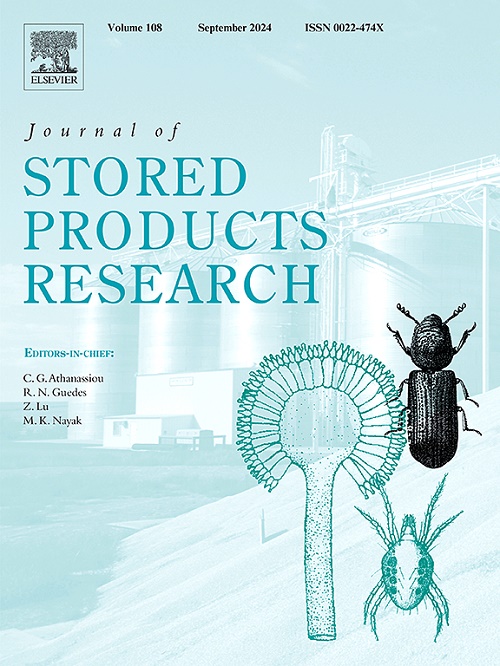Investigation on compression bruised mechanism of Cyperus esculentus L based on experiment and finite element method
IF 2.7
2区 农林科学
Q1 ENTOMOLOGY
引用次数: 0
Abstract
Cyperus esculentus L is a newly emerging multi-purpose food, which is also a raw material for drinks or brewing. It is susceptible to mechanical damage during mechanical harvesting, stored and food processing. The compression bruise is an important factor that affects the quality of Cyperus esculentus L. The compression bruise's region will be intruded into by bacteria, resulting in a reduction of food quality. Therefore, it is significant to study the compression bruise mechanism. Its mechanical properties are measured by experiment and applied as a reference to simulation. The macroscopic characteristics of the bruise were observed, and the bruised area was extracted. The experiments were carried out, which the loading displacement, loading speed and moisture content were selected as the factors. It is found that when the loading speed is 20 mm/min, the moisture content is 38 % and the loading displacement is 1.37 mm, the minimum loading force is 94.704 N and the minimum bruised area ratio is 18.924 %. The 3D scanning method was applied to establish the model of Cyperus esculentus L. The results of simulation show when the equivalent strain threshold is 0.10, the relative error is 15.05 % compared with experiment. The changes of equivalent stress, equivalent strain and internal energy are analyzed in the process of compression. The bruised volume and bruised sensitivity are analyzed in the condition of different loading displacements. The bruised sensitivity increases from 8955.24 mm3/mJ to 16814.82 mm3/mJ, when the loading displacement changes from 0.5 mm to 2.0 mm. The bruised sensitivity reduced from 16814.82 mm3/mJ to 13725.42 mm3/mJ, when the loading displacement from 2.0 mm to 2.5 mm.
基于实验和有限元法的香柏树压缩伤机制研究
香蒲是一种新兴的多用途食品,也是饮料或酿造的原料。在机械收获、储存和食品加工过程中容易受到机械损伤。压伤是影响沙柏品质的重要因素,压伤部位会被细菌侵入,导致食物品质下降。因此,对压缩挫伤机理的研究具有重要意义。通过实验测量了其力学性能,并作为仿真参考。观察瘀伤的宏观特征,提取瘀伤区域。以加载位移、加载速度和含水率为影响因素进行了试验研究。结果表明,当加载速度为20 mm/min,含水率为38%,加载位移为1.37 mm时,加载力最小为94.704 N,压伤面积比最小为18.924%。采用三维扫描方法建立沙螺模型,仿真结果表明,当等效应变阈值为0.10时,与实验相比,相对误差为15.05%。分析了压缩过程中等效应力、等效应变和内能的变化。分析了不同载荷位移条件下的碰伤体积和碰伤灵敏度。当加载位移从0.5 mm增加到2.0 mm时,损伤灵敏度从8955.24 mm3/mJ增加到16814.82 mm3/mJ。当加载位移从2.0 mm增加到2.5 mm时,损伤灵敏度从16814.82 mm3/mJ降低到13725.42 mm3/mJ。
本文章由计算机程序翻译,如有差异,请以英文原文为准。
求助全文
约1分钟内获得全文
求助全文
来源期刊
CiteScore
5.70
自引率
18.50%
发文量
112
审稿时长
45 days
期刊介绍:
The Journal of Stored Products Research provides an international medium for the publication of both reviews and original results from laboratory and field studies on the preservation and safety of stored products, notably food stocks, covering storage-related problems from the producer through the supply chain to the consumer. Stored products are characterised by having relatively low moisture content and include raw and semi-processed foods, animal feedstuffs, and a range of other durable items, including materials such as clothing or museum artefacts.

 求助内容:
求助内容: 应助结果提醒方式:
应助结果提醒方式:


